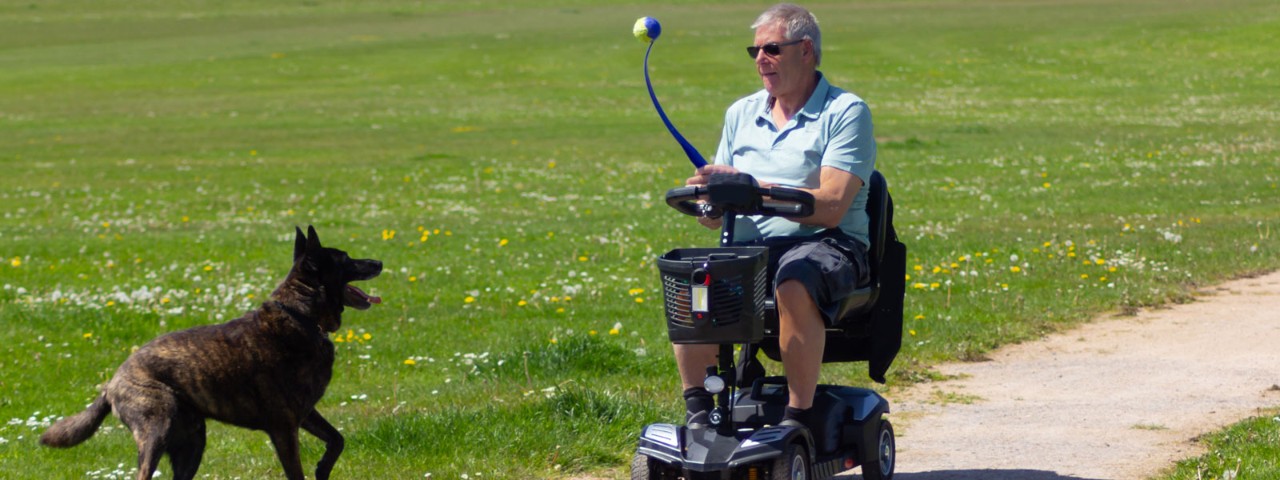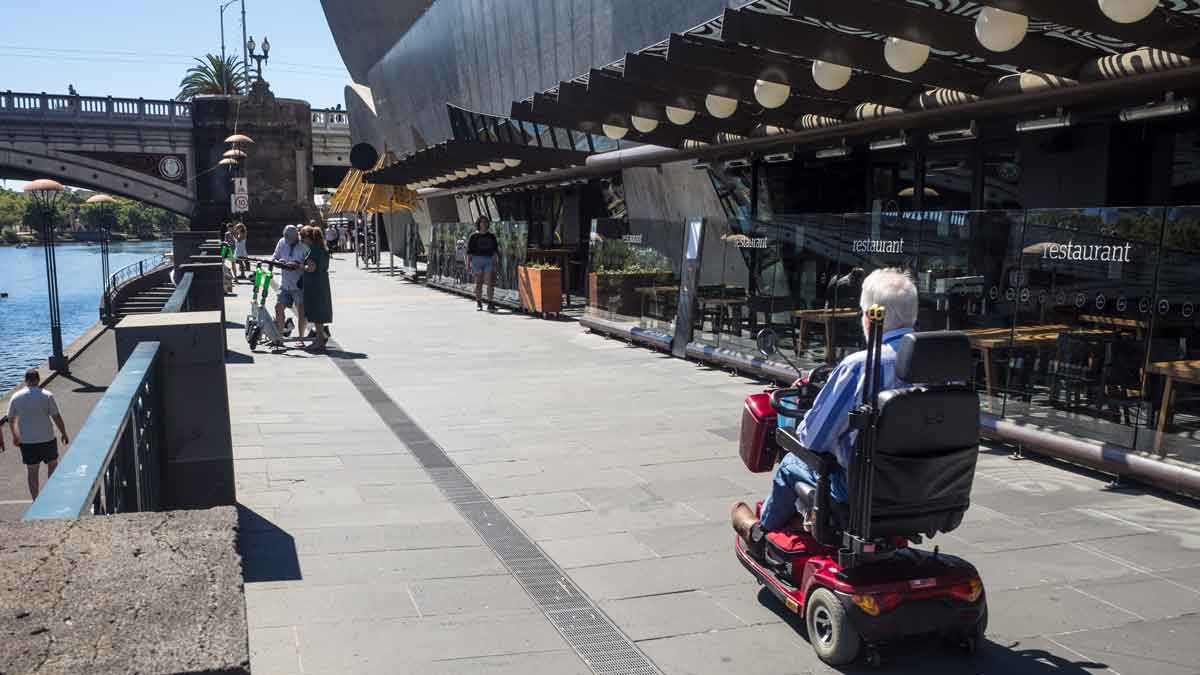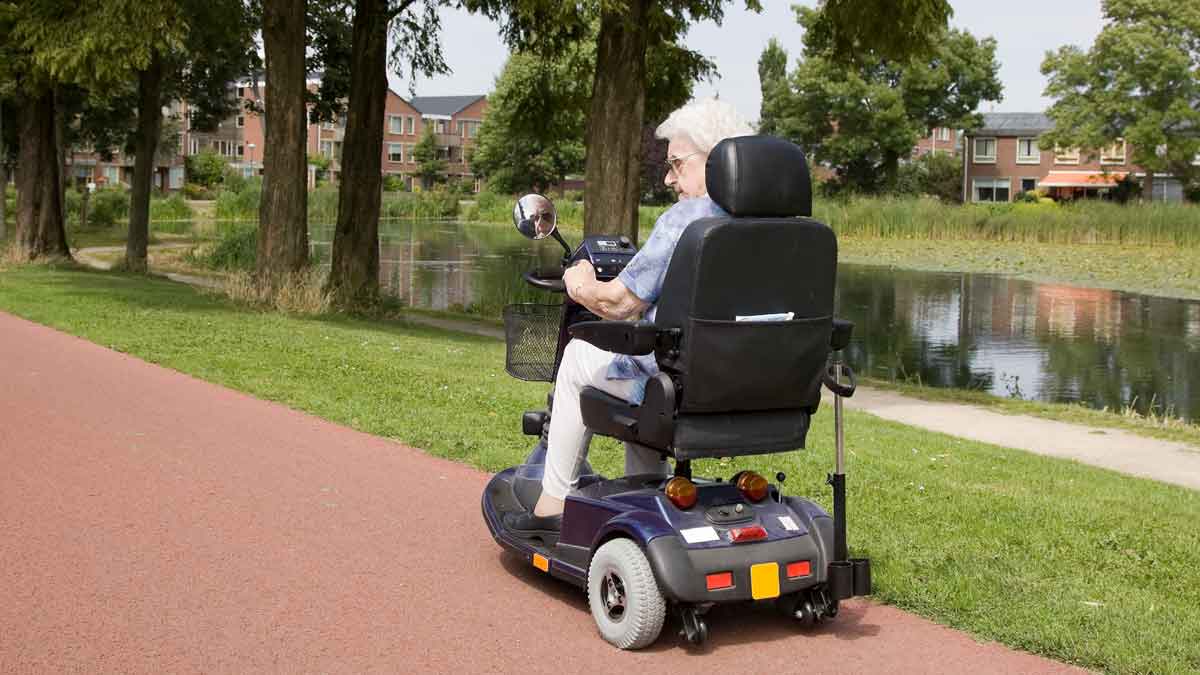Whether you’re considering a capsule, convertible or booster, these are Australia’s safest and easiest-to-use baby, toddler and child car seats for 2025.
Your complete guide to mobility scooters

Here is everything to know about owning a mobility scooter in Victoria, and how to operate one safely.
A motorised mobility scooter can provide much-needed independence for individuals with temporary or permanent disabilities to go about their daily routine.
If you are looking to own a mobility scooter, or buy one for a family member, there is a lot to think about: from the types on offer, to how to operate one safely and where can you buy one.
Given mobility scooters are therapeutic devices to assist in mobility, seek the advice of a health professional to ensure the device meets the needs of the user, and that the person is able to safely use the mobility scooter.
Here is everything you need to know about mobility scooters in Victoria.
On this page
What is a mobility scooter?
Mobility scooters are a motorised wheeled device that help people who have difficulty walking or travelling long distances to get around more easily. They can be used as a mobility aid both indoors and outdoors, and assist people to undertake daily tasks like grocery shopping, health appointments, and social activities with more ease.
It is important to note that mobility scooters are not designed to be used as a replacement for a wheelchair, as mobility scooter users will often need to walk short distances to get on and off the device.
How can I stay safe on a mobility scooter?
More than 1,000 Australians land in hospital due to mobility scooter-related injuries each year. It is important to stay safe and understand the rules for operating a mobility scooter, such as how to start, operate, and most importantly, stop.
Make sure you know how to share a footpath with other people, and how to cross the road safely.
For the first time out, have a family member or friend accompany you to test how to mount and dismount public transport, along with the how to get in and out of the scooter.
Much like learning the ‘feel’ of a new car, it will take time to know the limitations and features of the scooter – particularly external factors such as extra weight with shopping bags, or how it performs in wet conditions.
Just like a mobile phone, it is important to keep your mobility scooter charged and maintained before use.
Always have the details of an emergency contact on you when using your mobility scooter in case you break down or get into an accident.
What types of mobility scooters are there?
As mobility scooters come in varying sizes, fits, and seating styles, make sure to choose the right one for you.
Whilst personal preference may be a factor in choosing the features of mobility scooter, as these are therapeutic devices, advice needs to be sought from a qualified health professional as to what features are needed.
Consider these options when looking for a mobility scooter:
Portable / travel mobility scooter
These folding mobility scooters are designed to be disassembled, are very light, and can be folded to a small enough size to pack into a car or plane when travelling.
Travel scooters normally come with three or four wheels, and provide less padding. These models also tend to have a lower ground clearance and tend to get stuck on raised kerbs and uneven surfaces.
Three-wheel mobility scooter
Designed as a standard full-size mobility scooter, these models can be used both indoors, and on smooth surfaces outdoors such as paths.
With the three-wheel design, it provides very tight turning circles which are perfect for use in the home.
Four-wheel mobility scooter
These are heavier duty, and are recommended for primary use outdoors and for long distances. Four-wheel scooters are much more effective on gentle hills and ramps over a three-wheeler, but will not be able to handle serious off-roading.
Heavy duty mobility scooter
Built to last in the tough conditions, heavy-duty mobility scooters can withstand dirt and gravel – making them perfect for going on walking trails or traversing a property. Many are also equipped with heavy-duty suspension to handle small debris, and can withstand steeper inclines.
What features come with a mobility scooter?
All mobility scooters come with seats of varying comfort and ability. For instance, travel or portable scooters have seats that are smaller and not as padded for flexibility, whereas heavy duty mobility scooters may have seats that swivel, are contoured, and may come with a head and armrest.
Along with an accelerator, mobility scooters will also feature functional braking and handbrake. Many also have a central tiller linking to allow the user to adjust the distance from the seat to the controls.
As most mobility scooters come with some form of suspension, handles, seat, and battery, there are add-ons and after-market parts that you may want to look into to make your journey more comfortable and practical, including:
- Safety flags
- Cup holders
- Side mirrors
- Cane holders
- Storage baskets
- Weatherproof canopies
Most mobility scooters should also come with storage, whether that is a front-facing basket, under seat storage, or area for bags at the back of the scooter.

Using a mobility scooter can assist those who need assistance walking with the freedom to get out and about. Image: Getty
Who can use a mobility scooter?
Put simply, the only people who can use a mobility scooter are those who need one.
If you have difficulty walking, have a disability that impacts your movement, or have an injury that impairs your mobility, you can use a motorised mobility scooter.
Anyone who does not have such, is not permitted to use these devices on a public footpath or road.
Much like owning and operating a car, users must have the eyesight, as well as physical and mental capacity to use the device safely. It is strongly recommended the user undergoes a medical assessment from a health professional prior to using.
Do you need a license or permit for a mobility scooter?
Motorised mobility scooters are not classified as vehicles, but ‘devices.’ This means they are not registered, and no license is required, but you may be required to provide medical evidence of your need for the scooter.
What rules apply when using a mobility scooter?
While motorised mobility scooters are not allowed to be used on the road, rules do apply for when in use on a shared path or public setting such as a supermarket:
- The maximum speed of a motorised mobility scooter should not exceed 10km/h on level ground
- The mobility scooter can only take a single person at any time
- The weight of the device or maximum weight capacity (without a person) must not exceed 110 kilos
Any individual operating a mobility scooter is considered a pedestrian, and therefore must obey the same rules and regulation as other pedestrians – crossing signals for example.

Consider the safety elements of using a mobility scooter, including braking on different surfaces. Image: Getty
How much does a mobility scooter cost?
Just like with cars, the price of a mobility scooter in Victoria can differ greatly depending on type, features, speed, and brand, and whether any government assistance is available such as the NDIS.
All mobility scooters in Australia should meet Australian Standards and be registered with the Therapeutic Goods Administration (TGA) before being available for purchase new.
Mobility scooter costs appear to range anywhere from $1,400 to $12,000 new, with portable mobility scooters being the most budget-friendly option, and heavy-duty mobility scooters at the higher-priced end.
Where can you purchase a mobility scooter?
Motorised mobility scooters can be hired from some pharmacies, health care providers and equipment stores. If looking to buy, mobility scooters can be purchased online or in speciality stores.
Ensure your mobility scooter provider allows for you to take a test drive, and the device is registered with the TGA before purchasing. You will want to investigate maintenance and insurance costs for your device to stay within budget.
It is strongly advised the user seeks the advice from a medical professional before purchasing to ensure the device meets the users' needs and can operate the mobility scooter safely.


